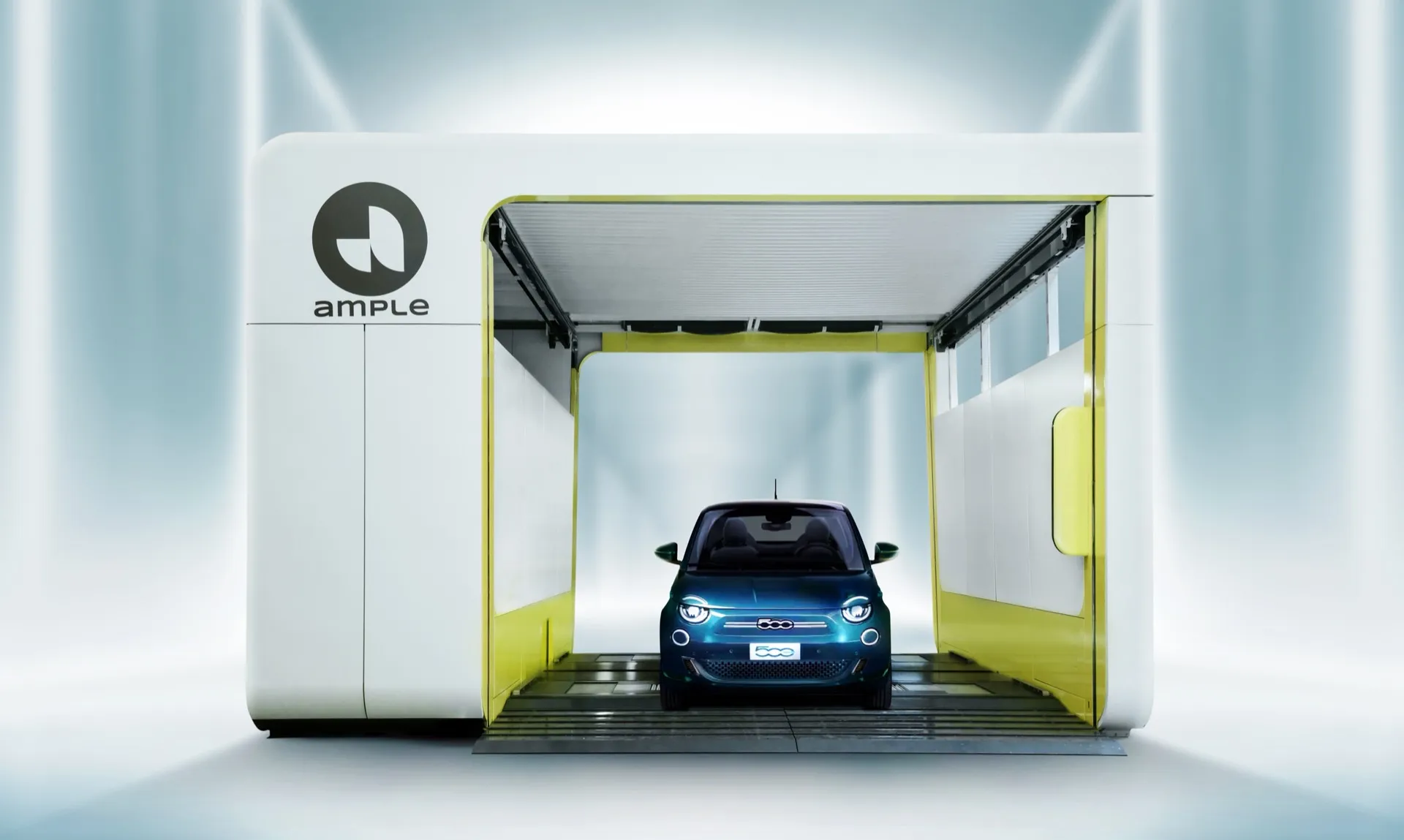
Stellantis has teamed up with U.S. startup Ample to test a battery swapping system that promises to automatically install a fully charged battery in an electric vehicle in just five minutes.
Under a deal announced on Thursday, Stellantis will convert 100 examples of the 2024 Fiat 500e to work with Ample’s Modular Battery Swapping system.
The cars won’t be sold to the public but instead join the car sharing fleet of Free2Move, a mobility company owned by Stellantis. The fleet will initially operate exclusively in Madrid, Spain, but the companies in a joint statement said they’re looking at expanding the program to other regions, and other vehicles from the Stellantis fold.
Lengthy charge times remain a major hurdle for EV manufacturers looking to convince customers to give up their gas cars. Currently, the most popular solution is DC fast-charging that can deliver close to a full charge in 30 minutes or less.

Ample’s solution requires a dedicated battery swapping station where an EV owner drives onto a designated platform and the station handles the swap automatically. Ample said the station is a modular design that requires just three days to install and can easily be moved from location to location, to suit changing demand. Ample said its station also costs significantly less to install than a DC fast-charging station.
The technology also has the potential to lower the cost of an EV and aleviate concerns of the battery wearing out and requiring a costly replacement, or a customer being stuck with outdated battery technology. With Ample’s solution, EVs could be sold without the battery and customers left to subscribe for a battery swapping plan, where the batteries are owned by the vehicle manufacturer or a third party.
Tesla explored the potential for battery swapping as early as 2013, but eventually gave up on the idea. Some Chinese automakers have brought the technology to market, the most significant being Nio which has thousands of the stations established in China and has started installing them in Europe as well.





